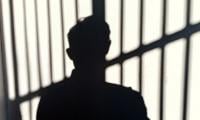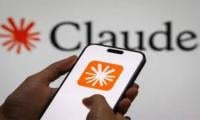Covid-19 education response
Across the world, nearly two billion students are suddenly not in their formal educational institutions. Shocked, the globe struggles with Zoom and Google Classroom to keep children and young adults learning.
But there is a dark side to education access: students with little to no connectivity or even the right hardware to receive a digital education, whether synchronously or not. In Pakistan, a country accustomed to tens of millions of children being out of school all year, the ways in which we think about education in Coronatime will have both short and long-term implications for putting meaning back into our education system.
What are some currently acknowledged constraints? Only one-third of the Pakistani population was reported to have a broadband subscription at the end of 2019. A similar number was reported for 3G/4G subscriptions. How many people overlap in the two subscriptions is not clear from publicly-available data through the Pakistan Telecommunication Authority. But the question these figures raise is one of reliable, stable, and universal access to online education for the country’s at least 50 million children who are just in school education (whether public or private).
This is the cautious background against which we are reaching for solutions to distance learning: diversify in digital; celebrate the edtech warriors hovering at the margins of brick-and-mortar policy decisions; declare summer holidays. All of these suggest that the Pakistani government wants to solve correctly for student learning in a time of unprecedented uncertainty. But how will these options sit against the logistical constraints noted above?
Consider the attempt at mass instruction: a dedicated national public TV channel to broadcast Pakistani school lessons. How does effective assessment feature into this model? More importantly, should it at this short-term stage of the response to Covid shutdowns? We may have to adjust down the curriculum that gets covered this academic year so that learning can be remediated once schools reopen. But when will they realistically be safe to open?
In the interim, can radio, text and/or postal correspondence be blended with TV and online tools to assess? Some of these methods have been attempted successfully in other developing contexts. But Pakistan has one of the largest education populations in the world at just the school level. Will tried-and-tested methods scale well?
Universities are different. They may resume semesters if equipped with appropriate technological and digital learning resources, delaying assessment until campuses reopen. Otherwise, they will have to become the learning community that academia should already have been a long time ago: work with each other, and put Pakistan on the map for successful transitions to remote learning at the earliest possible.
Amidst this seeming chaos, what is clear is that life has dealt us a hand within which hides an opportunity: we are being compelled to rethink the purpose, design, delivery and evaluation of our education system as a country. Because Covid-19 does not differentiate by class, in shutting all of our schools and universities, it has reminded us to return to the most essential fundamentals of planning: what do human beings need to learn in order to live a good life?
This ethic may be one of our golden nuggets for redesigning how we do education policy. Instead of following top-down approaches, now is a chance to learn to collaborate, test, evaluate, and iterate practical solutions. Some will yield results faster than others, but all of them will have a common feature: intense and repetitive creativity.
Think about two assumptions most university instructors had about digital education when Covid-19 shutdowns began: it is an online equivalent of conventional instruction; and the process is largely about technological deployment. These have quickly been unlearned, as any Pakistani faculty member will testify.
If anything, the simplest part of going digital is identifying missing internet and computing infrastructure and then deploying it. The real challenge is building solution sets that remain responsive to multiple human needs of end users. What does motivation look like in a transformed classroom setting; how is work-life balance redefined with extensive hours at home; which platforms suit which kinds of students? These are all questions that a typical user journey would try to map and a tech initiative like Digital Pakistan can be the right body for the job.
Working through an agile and iterative process of data collection, organisation and dissemination, Digital Pakistan can bring multiple voices together to restore a level of calm through information symmetry in an excessively disrupted system. Bite-sized infovideos in local languages can help students and instructors adapt more quickly to digital learning systems.
It can also develop a shared platform that hosts national reports of responses to teaching and learning in a Covid-19 environment. Pakistani educators and their students at school and university levels can then exchange best practices in semi-real time. The HEC and its affiliated universities can use this evidence to track Pakistan’s crisis management. It can also share it with education researchers towards long-term democratised learning solutions for Pakistani students.
At Vanderbilt, one of the world’s best universities for education policy, democratic learning is already part of the curriculum. Service learning is a routine mechanism through which students are academically credited for meeting learning goals through community engagement. The implications of this are clear: learning is not about meeting certain credits; credits are awarded for the fulfilment of a period of meaningful learning and this can assume different forms in different circumstances.
Is there potential for the Pakistani federal government to tweak such models to reward young students participating in different forms of the Corona relief efforts? This could happen in the form of partial course credit, reduction in tuition fees or even – for exceptional demonstrations of leadership – participation in actual youth policy and delivery.
By formally instituting service towards communities and other responsive education policies like the ones above, we can start reminding young Pakistanis what it really means to have an education: empowerment to help others and oneself through an intelligent and systematic plan.
The writer is an education researcher and faculty at the LUMS School of Education.
-
 Zoe Saldana Overtakes Scarlett Johansson To Become Highest Grossing Actor Of All Time
Zoe Saldana Overtakes Scarlett Johansson To Become Highest Grossing Actor Of All Time -
 Former Congressional Employee Sold Stolen Government Phones For $150k
Former Congressional Employee Sold Stolen Government Phones For $150k -
 Joe Keery Credits Friends For Rare Experience
Joe Keery Credits Friends For Rare Experience -
 Jackson White Teases Darker Turn For Stephen In 'Tell Me Lies' Season 3
Jackson White Teases Darker Turn For Stephen In 'Tell Me Lies' Season 3 -
 Chris Hemsworth Leans On Matt Damon Amid His Shaky Marriage To Elsa Pataky?
Chris Hemsworth Leans On Matt Damon Amid His Shaky Marriage To Elsa Pataky? -
 Friends Of Prince William 'aghast' As King Charles Offers Olive Branch To Harry, Meghan Markle
Friends Of Prince William 'aghast' As King Charles Offers Olive Branch To Harry, Meghan Markle -
 What Cancer Does Colleen Hoover Have?
What Cancer Does Colleen Hoover Have? -
 Zayn Malik Drops Special Surprise For Fans On His 33rd Birthday
Zayn Malik Drops Special Surprise For Fans On His 33rd Birthday -
 Nicola Peltz Sends Harsh Message To Beckhams With Brooklyn Comments
Nicola Peltz Sends Harsh Message To Beckhams With Brooklyn Comments -
 Apple Martin 'lashes' Out At Mom Gwyneth Paltrow For Pushing Her 'too Hard'
Apple Martin 'lashes' Out At Mom Gwyneth Paltrow For Pushing Her 'too Hard' -
 Meghan Markle Going To 'humiliate' Prince Harry With UK Trip
Meghan Markle Going To 'humiliate' Prince Harry With UK Trip -
 Pastor Jailed After Secretly Filming Woman In Store
Pastor Jailed After Secretly Filming Woman In Store -
 Julio Iglesias Faces Serious Abuse Accusation
Julio Iglesias Faces Serious Abuse Accusation -
 Buckingham Palace’s ‘liability’ Prince Harry Comes Under Fire: ‘Can Really Harm King Charles’
Buckingham Palace’s ‘liability’ Prince Harry Comes Under Fire: ‘Can Really Harm King Charles’ -
 Emily Bader Reveals Inspiration Behind Choosing Latest Project
Emily Bader Reveals Inspiration Behind Choosing Latest Project -
 Anthropic Rolls Out Claude Cowork For Non-coders
Anthropic Rolls Out Claude Cowork For Non-coders



